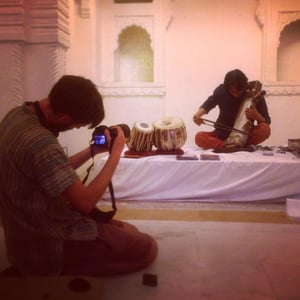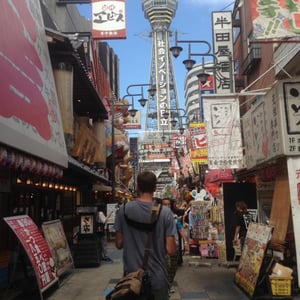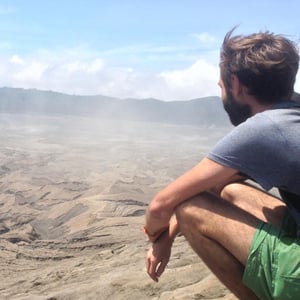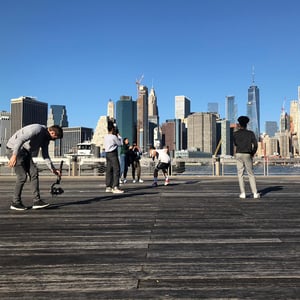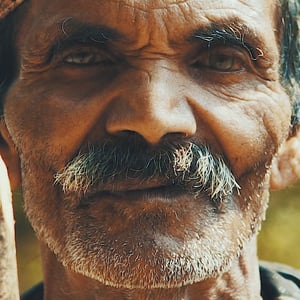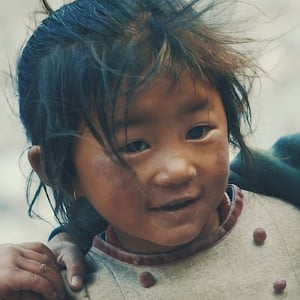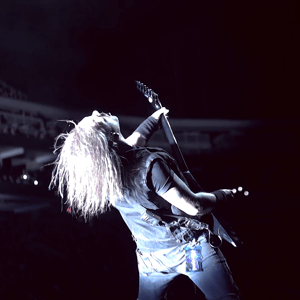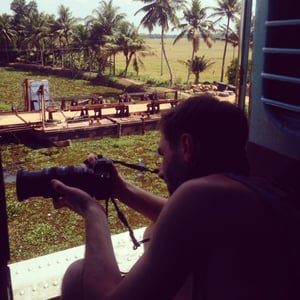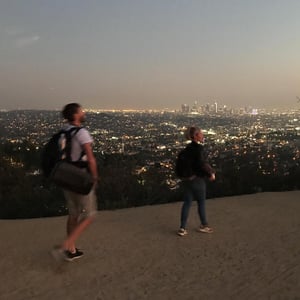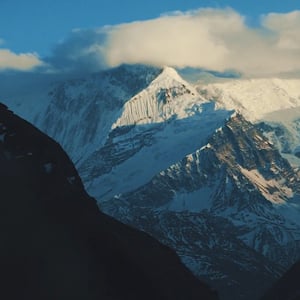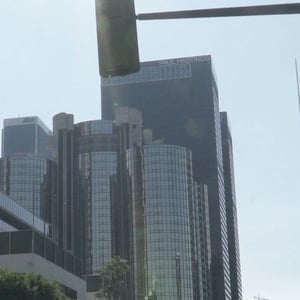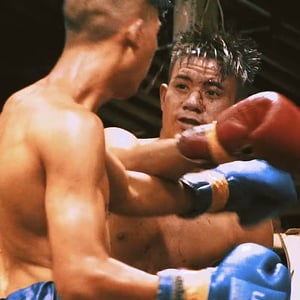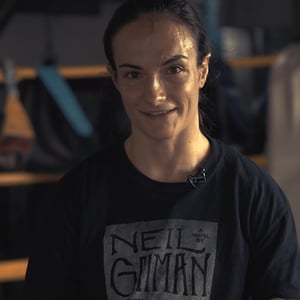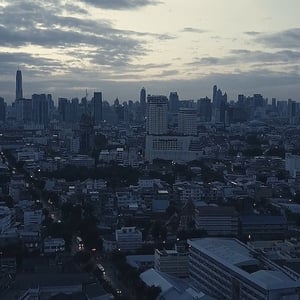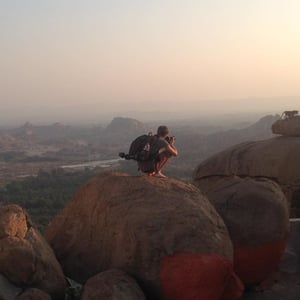For our next Director 101 Interview we learn more about wandering director Simon Mulvaney. We explore his inspirations, experience and the processes behind his beautifully shot work.
Experience.
What do you enjoy most about shooting for brands?
Collaboration.
Most of my independent passion projects tend to be undertaken as a solo filmmaker, or with a very small, tight-knit team. At this current stage in my career, it’s mostly in my commercial work, where I end up collaborating with dozens of other creators, in order to craft something we can all be proud of.
Which project has been your most informative to date?
Every project comes with its own challenges, teaches me something about both myself and my craft, and leaves me as a better filmmaker by the end of the process. If I had to pick a single project though, it would be my Creators Unite film for adidas.
Adidas’ internal marketing team hold story as their main goal when collaborating on a project. Up until then (if I’m being completely honest with myself), I had hidden my lack of storytelling ability, behind a shallow veneer of contemporary visual techniques. It was the Creators Unite project that helped teach me how to scrutinise all aspects of production, with the sole aim of creating an engaging story.
The film ended up being such a success internally that adidas turned the project from an internal one, to an external one. Considering that I shot, edited, graded and mixed the entire film as a one-man-band filmmaker, alongside a talented producer and creative, this was an achievement that, at the time, I was very proud of.
Do you enjoy collaborating with other directors?
It really depends on the project!
I’m currently producing a collaborative, short documentary that is proving very inspiring to be a part of and I’m gaining a lot of insight and inspiration from working closely with dozens of different directors from around the UK.
However, I do believe that sometimes a project needs just one mind on it; one person to craft the narrative, to keep it on the right track.
How do you push a script to exceed client expectations?
Everything comes down to story. Quite often, a client or agency will approach me with a rough idea for a project; they’ll have a few specific shots, moments or key messages in mind, that they’d like included in the finished film. But quite often, it’s fairly rough.
I find that a client’s expectations start to be exceeded, when they begin to see how all of their specific requirements for the project can be knitted together in a way that they could never have imagined, where each decision is backed up with reasoned justification and through this, the film is used to communicate the core essence of the brand/ product.
Which clients have been a dream to work with?
Tesla and Quorn are the clients that I have felt the most amount of pride from working with, as they are both doing such amazing things for the longevity of our planet and species.
I hope to continue to work with brands/clients with environmental, ecological and above all, ethical principles at the core of their strategies.
Have you had to work in any challenging locations? How did you handle it?
Banke Bihari temple in Vrindavan, India, during Holi Festival, was probably the most challenging place I have ever filmed in.
Aside from being constantly (and sometimes maliciously) pelted with powder paint and water (neither of which are exactly a camera’s best friend), I had to contend with the wild, religious hysteria that surrounds the event, which sees people pushing, shoving, punching and trampling their fellow worshippers and spectators, in order to get a few feet closer to a tiny stone statue at the front of the main hall.
I ended up bribing a fearsome looking man in a balaclava, in order to escape to the relative solitude of the temple’s upper balconies, in order to continue filming.
The film that resulted from this shoot landed me my second Vimeo Staff Pick, which made the whole process worth it.
What can film do for documentary that other media forms can’t?
Documentary is a genre that has always fascinated me; mostly due to its ability to help audiences to see the beautiful drama that lies behind every moment of existence, whether seemingly mundane or extraordinary.
Due to its emphasis on reality, documentary ties emotion to a subject matter in ways that no other medium can, with honesty and integrity at the core of its storytelling.
Do you think documentary can successfully align with other film genres? Do you have any examples?
Absolutely!
Documentaries can be dramatic, comedic, epic, fantastical, scary, thrilling - Any genre that exists in traditional forms of cinema, can also exist in documentary - That’s the beauty of the genre!
Industry.
Who is the most important and or influential person for you in the world of film right now?
Society’s collective consciousness moves in giant waves, derived from the minuscule actions of the many, rather than from the celebrated actions of the few.
Early on in my career, I may have reeled off a number of names. But as my directing matures, I am starting to be drawn to individual aspects of other director’s work, rather than celebrating them as being the single ‘the most important or influential’ figure within the medium.
I love the purpose-driven camera movements of Spielberg, the cinematic fidelity of Scorsese, the raw attitude of Tarantino, the conversational tone of Linklater, the self questioning confrontation of Kaufman, the experimental improvisation of Apatow, the sorrowful underbelly of Anderson, the child-like playfulness of Chazelle and the charming heroism of Abrams.
Each of the lauded names listed above have managed to combine stylistic elements of successful works that came before them, and eventually, I hope to one day do the same, with a gracious ease similar to those listed above.
What concept, idea or technique do you think is most underused? Which is overhyped?
A director’s main focus should be to tell a story, rather than worrying about whether the techniques they employ to tell that story are considered to be ‘underused’ or ‘overhyped’. So long as the story is being told in a way that remains true to the director’s unique character, formed by decades of personal experiences, then hopefully, it will transcend what’s considered to be ‘fashionable’ within the medium.
What recent technological innovation has had the biggest impact on your work?
The democratisation of filmmaking that both YouTube/Vimeo and the DSLR revolution ushered in, has birthed a number of DIY filmmakers, adept in the art of direct cinema.
With the need to pander to the whims of financiers gone, a new generation of free-thinking artists have emerged, who use film to tell their stories independently, whilst simultaneously allowing them to find large audiences.
I was lucky enough to enter the industry during this transition and fortunately, was able to forge out a career from the results of it.
Do you think filmmakers have a responsibility to make challenging, socially conscious work?
We represent a generation who have been tasked with bringing our planet back from the total and absolute destruction of its (until now) stable habitability.
It’s a daunting time to be alive; both for ourselves and for our children, and even though, as responsible individuals, a lot of the planet’s issues are not of our making, it is our responsibility to do what we can to remedy the actions of those more selfish and careless than ourselves.
It is my fervent belief that it is the responsibility of creators and storytellers to tell the types of stories that can slowly begin to steer the mass consciousness of our species in a direction that is less destructive.
In order to do this, we must carefully and mindfully choose who were work with and the messages we attach to our storytelling prowess, in order to bring about long-lasting, sustainable change, both for ourselves and for future generations.
Personal.
When inspiration is waning, when creativity is sapped, how do you stay inspired?
The job of a director is to be fluent in the language of cinema and to be able to communicate the requirements of that language to those who are masters of more specific crafts e.g. actors, cinematographers, art directors, music composers, editors, sound designers etc.
At this stage in my career, I am by no means fluent in that language; or at least, not as fluent as I would like to be. However, with every movie I watch and every critical analysis I read, I become better at understanding that language. Likewise, with every film I make and every bit of criticism I receive, I get better at using that language.
When it comes to my branded/commercial work, I simply pull on my ever-expanding knowledge of that language and therefore, the task doesn’t come with the fear of being uninspired or creatively sapped. It would be akin to asking a person learning to speak French, if they need to be creatively inspired in order to speak it - They just speak.
I think this is the difference between an amateur filmmaker and a professional filmmaker, and it’s what clients/brands pay for.
However, with my personal, non-branded projects; the projects that have more room for risky experimentation, my process is very different and sees me pulling on my wide tapestry of life experiences, in order to determine what my next project might be, or the direction in which to take something.
How do you know when your story is finished and it’s time to walk away?
Usually when the deadline arrives. It’s a cliche thing to say, but a film is never finished, there just comes a time where you need to stop working on it and allow people to watch it. This is as much a case for branded/commercial work, as it is with more artistic projects. It’s the job of the producer to help to steer the project towards the finish line in a form that is as good as it can be, given the time restraints placed upon its creation. Luckily for me, my good pals at The Gate are always there to help with that.
What non-film medium inspires your work?
All of them, in equal abundance!
Film is the medium that I most frequently choose to communicate how I’m feeling at any given moment. But it’s the ups, downs, twists and turns of my broader life that most influences what will be communicated.
Also music… Music helps a lot!
Is the evolution of your style a conscious or subconscious process?
I think it’s more of an unconscious process.
The more films I make, the more I come to understand that a film (like any piece of art) wants to be what it will inevitably end up being. All I can do is attempt to steer it towards its final form.
Usually (with the exception of my branded/commercial work), the finished film is nothing like the film you initially thought it would be - with a bit of luck, it’ll be better!
How do you balance meeting commercial objectives without sacrificing your art?
Mostly through constant communication and collaboration with the client/brand/agency.
I try to be as honest and opaque as possible, when it comes to communicating why I am making decisions and the ramifications of changing elements within the cinematic language I am choosing to use. If some of my choices don’t sit well with the client/brand/agency, we work together to find solutions that work for everybody.
So long as the finished film permits the audience to feel something, then the art hasn’t been lost in the process. It’s my job to get the film across the finish line with this intact.
What’s going on in your world when you’re not looking through a lens?
A lot of my free time is spent hiking and wild camping with a map and a compass, watching movies, listening to music, reading books, playing video games, socialising with friends and family, and rollerblading until my ageing body inevitably injures itself.
What’s your advice for emerging filmmakers wanting to make their stamp in the industry?
Don’t set out to make an amazing film, that’s too much pressure to apply to yourself. Simply set out to make a film, and make as many as your inspiration will allow you to. But leave space to fuel that inspiration too. If all you ever do is make films, what will there be for those films to communicate?
Listen to your instincts, explore who you are and above all, have fun!
What are you most looking forward to with your adventure with The Gate?
To continue to create thought-provoking content that steers society in an environmentally, socially and culturally responsible way, whilst simultaneously allowing both brands and myself to communicate who they/we are; all whilst working with an amazing, fun-loving team who know how to balance professionalism and artistic expression, with having a good time.
Follow Si's adventures below:
INSTA: @smulvaney.tv
YOUTUBE: https://www.youtube.com/simonmulvaney
VIMEO: https://vimeo.com/smulvaney
